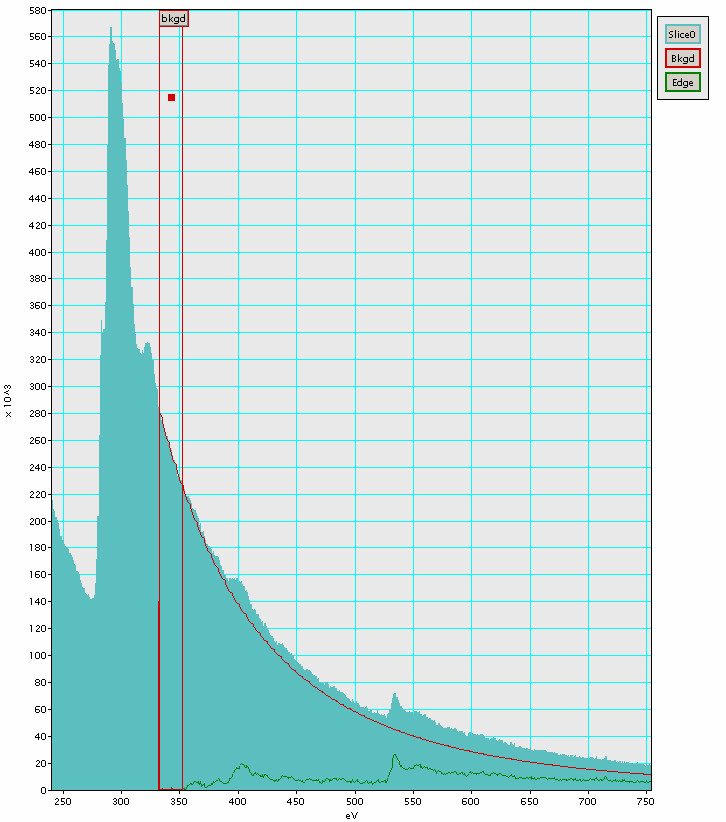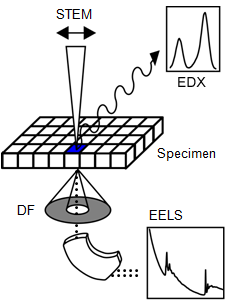Electron Energy Loss Spectroscopy
The electron energy-loss spectromter (EELS) system moved on to the ARM200F in December 2011. The EELS system is a Gatan Quantum SE, only the second in the UK, with significant improvements in performance over previous systems.
Energy-Loss Spectroscopy (EELS) (see also EF-TEM)
To some extent, EELS can be seen as the complement of X-ray analysis. When an electron excites an X-ray of a specific energy (which can be used to analyse composition using EDX), conservation of energy dictates that the electron emerging from the sample will have lost exactly the same energy as that given to the X-ray. If we look at a spectrum of the electron energy, we can see 'edges' at these specific energies, which can be used to determine and quantify elemental composition. These edges lie on an exponentially-decreasing background, which means that extraction of compositional data needs some processing. Here you can see part of an EELS spectrum showing a big C edge at 280 eV and a small Fe edge at 530 eV. EELS is particularly useful for light element analysis, since the X-ray energies are low and they are absorbed by materials in the EDX system. In EELS the electrons have (almost) the full energy of 200 keV and so it is possible to detect and quantify elements such as He, Li and Be which are invisible to EDX.

Fine detail can be seen on the edges; this Energy-loss Near-Edge Structure (ELNES) gives chemical bonding information similar to X-ray Absorption Fine Structure (EXAFS), although EXAFS requires a sample about 100,000x bigger than this kind of analysis in the TEM. If EELS is preformed in STEM mode, it can be combined with EDX and dark field STEM imaging, shown schematically below. The 2100 system will be capable of collecting several signals simultaneously, giving a huge amount of detail.

